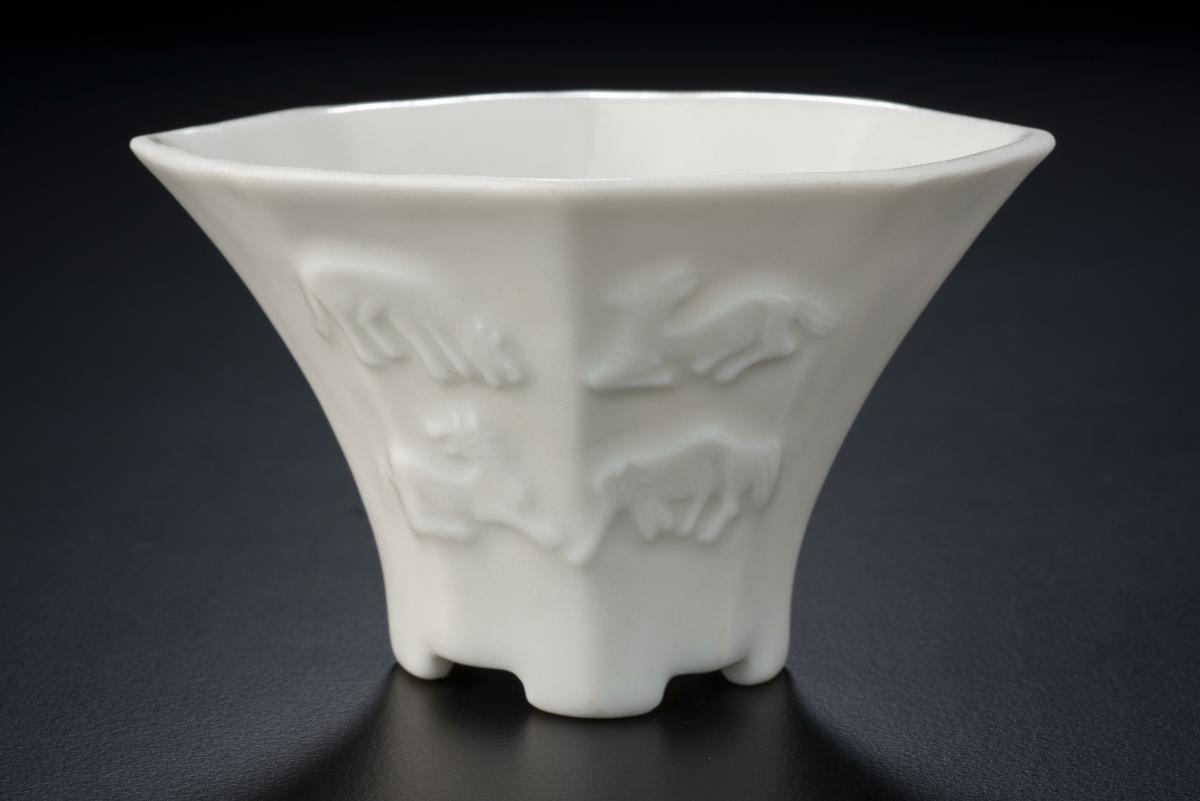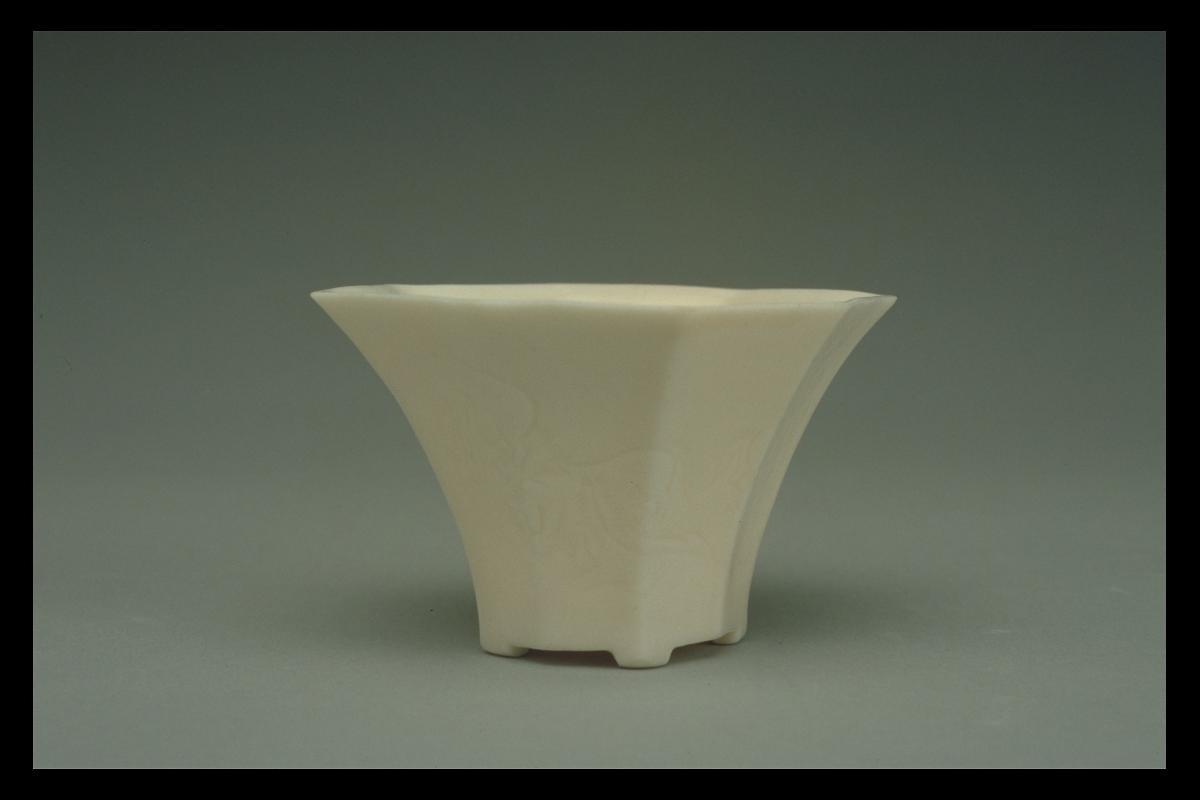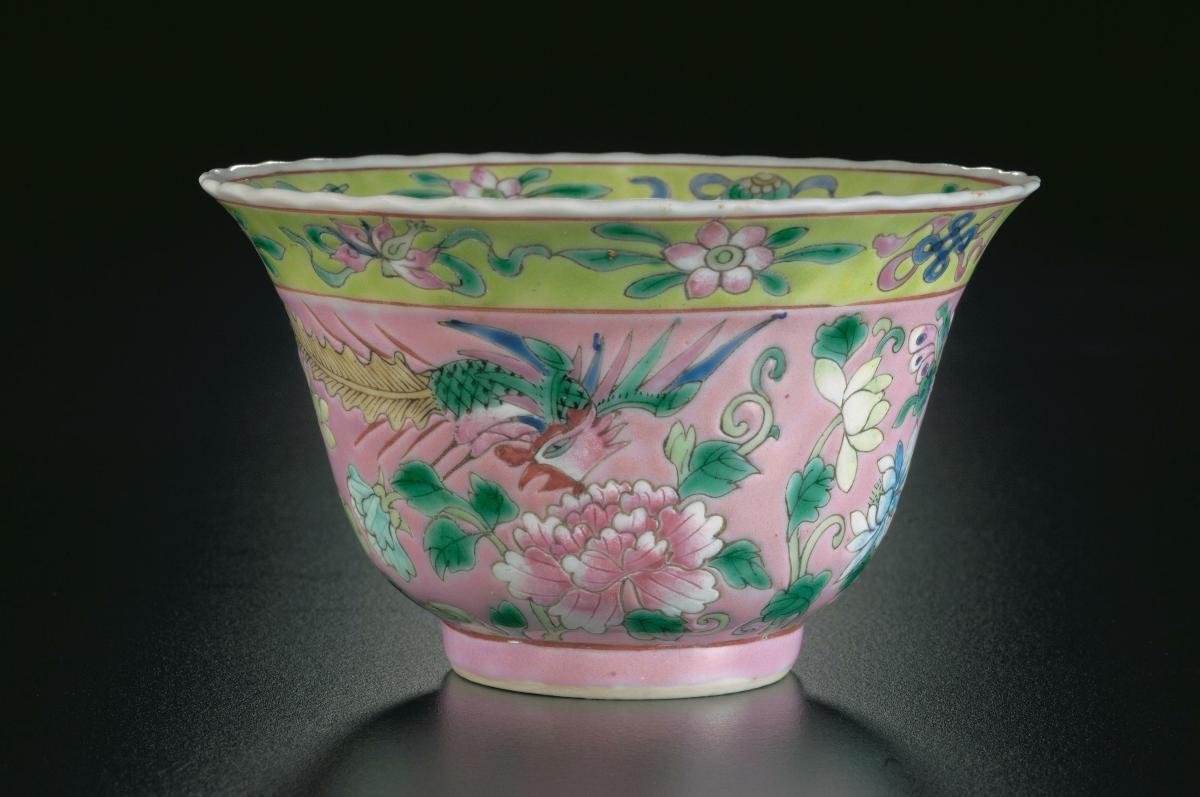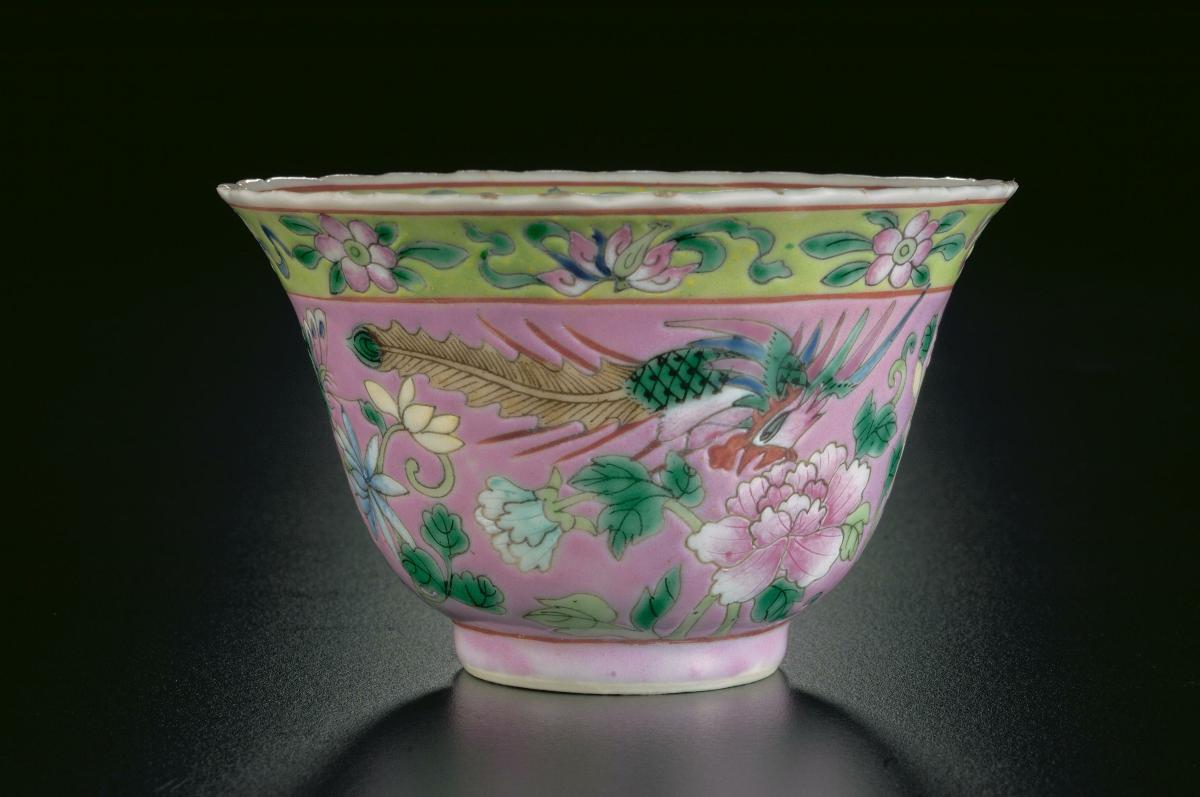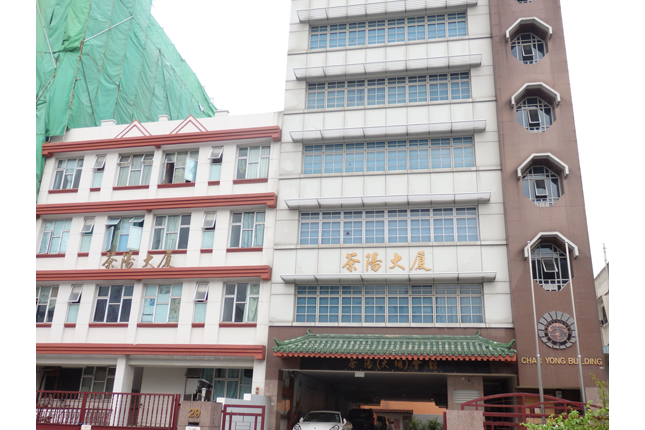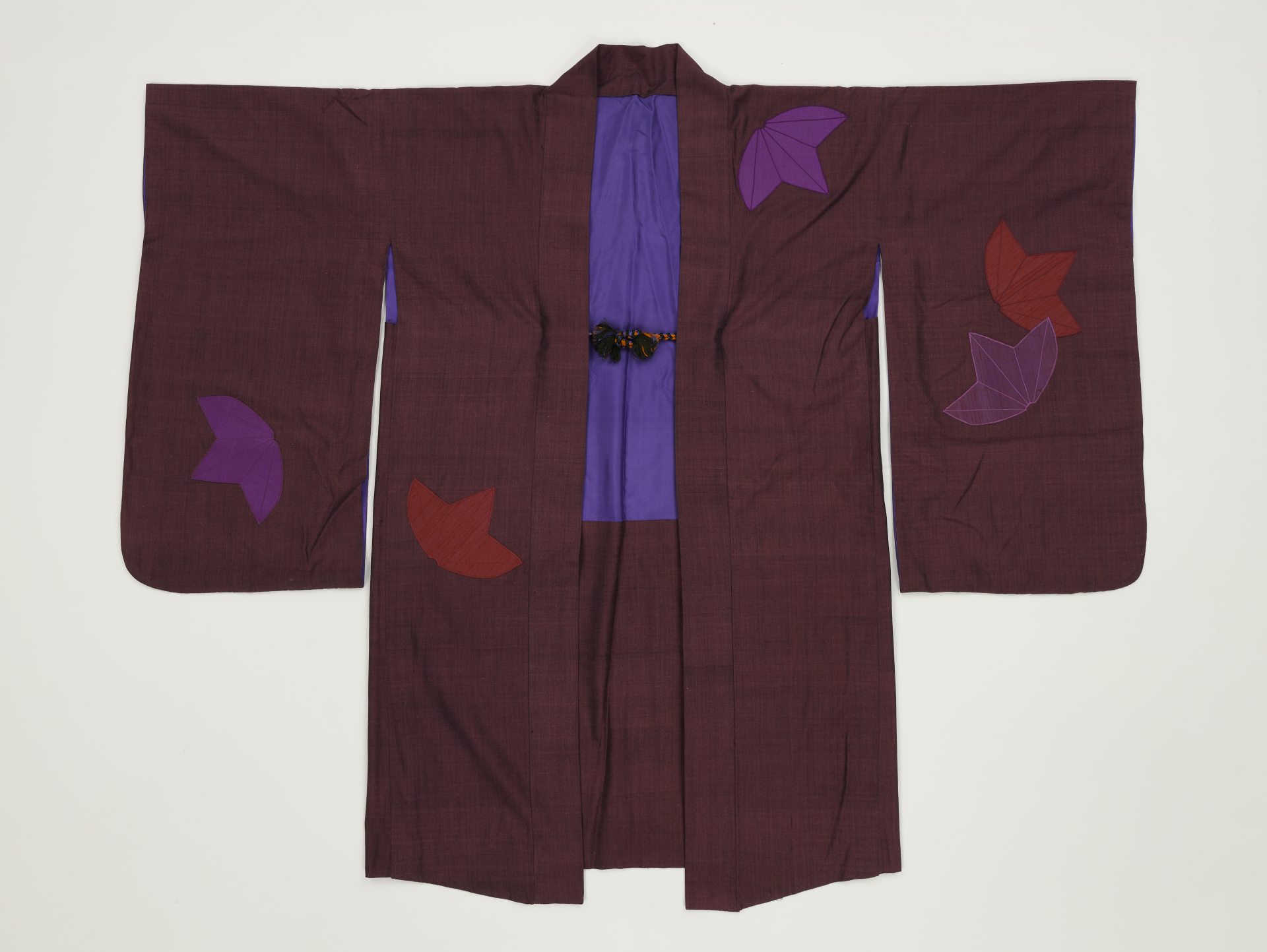This cup was moulded as indicated by the hexagonal moulds found at kilns such as Qudougong. Moulds were lightly carved to produce relief decoration on the moulded vessel, although in this case, the high relief design of eight horses was probably applied after construction of the cup. The horses, the legendary steeds of Emperor Mu (r. 956–918 BCE) were thought to be related to dragons. They carried him on an epic journey through the Kunlun mountains to the home of the immortals. This story reappeared in texts of the Warring States (475-221 BCE) and Han dynasty (206 BCE–220 CE). Each of the horses had a particular supernatural characteristic. They were referred to as a 'qianli ma' (thousand li horses) reputed to be able to travel a thousand li (640 kilometres) in a day.Dehua, located on the southeast coast of Fujian province, is well known for its production of white porcelain, known to Europeans as 'blanc de Chine'. The earliest Dehua porcelain was produced as early as the 14th century but the production and quality of these porcelain peaked around the 17th and 18th centuries.




